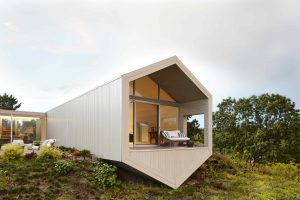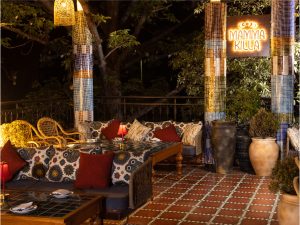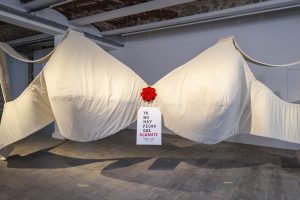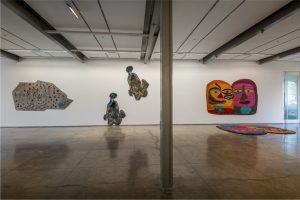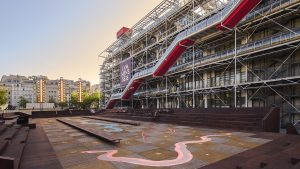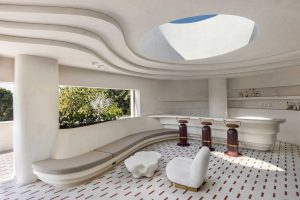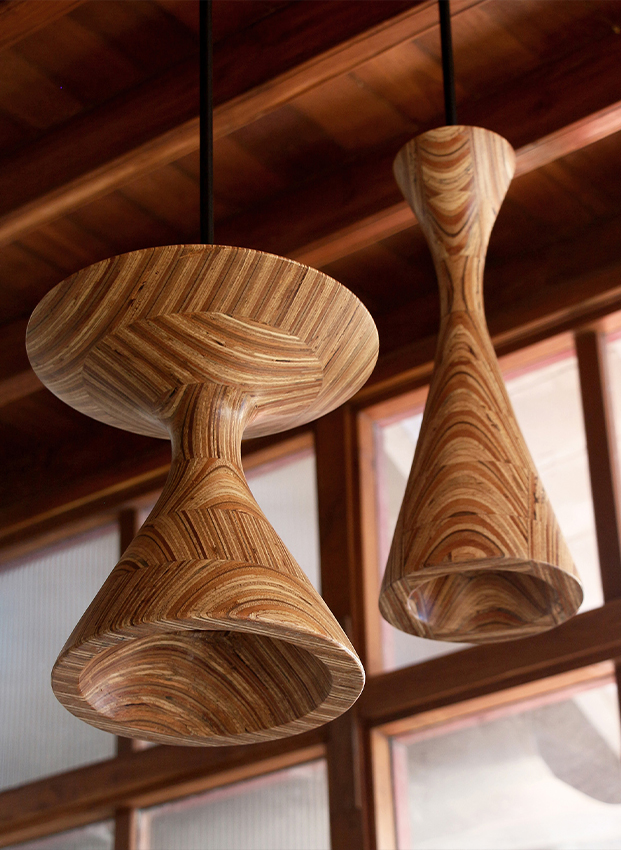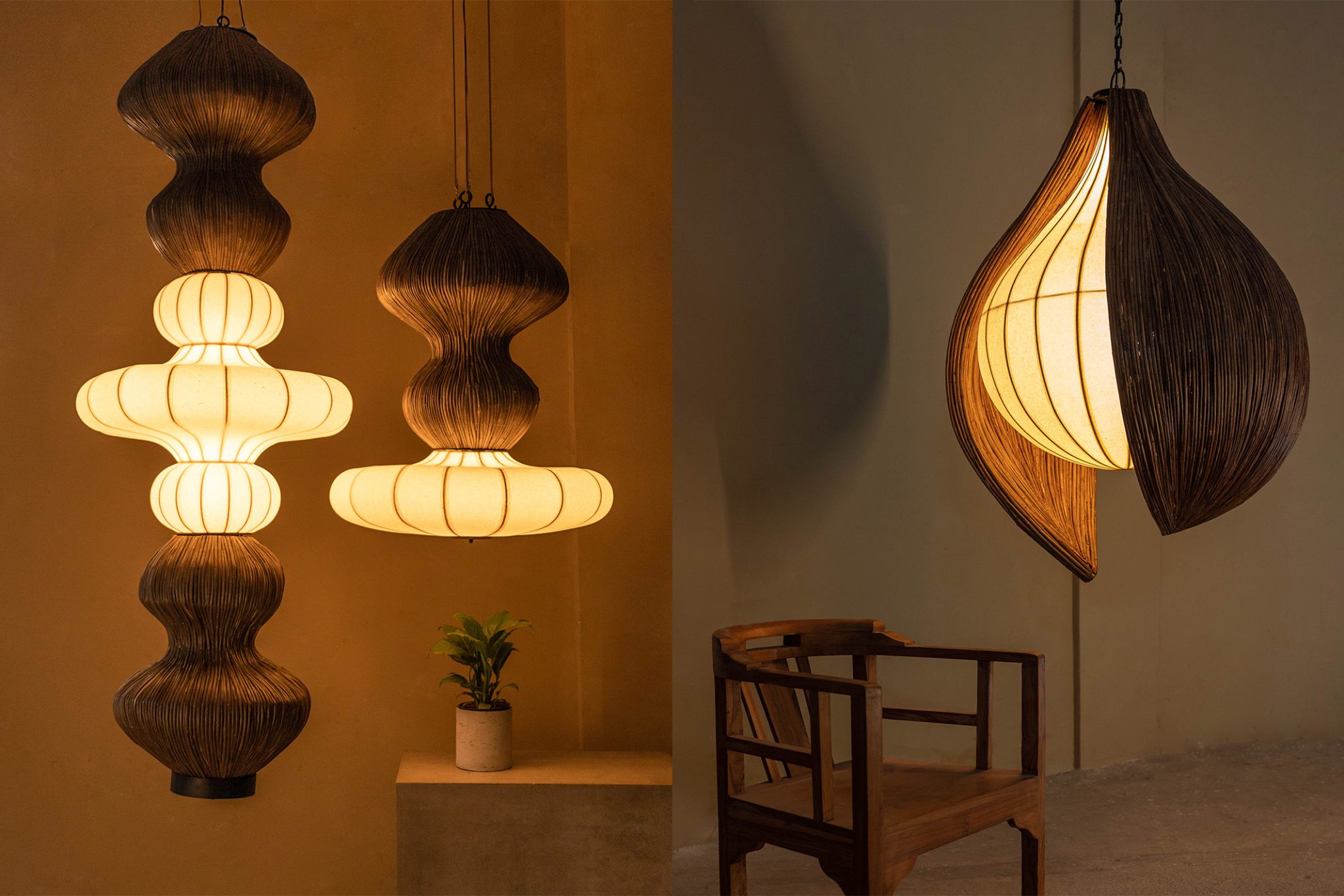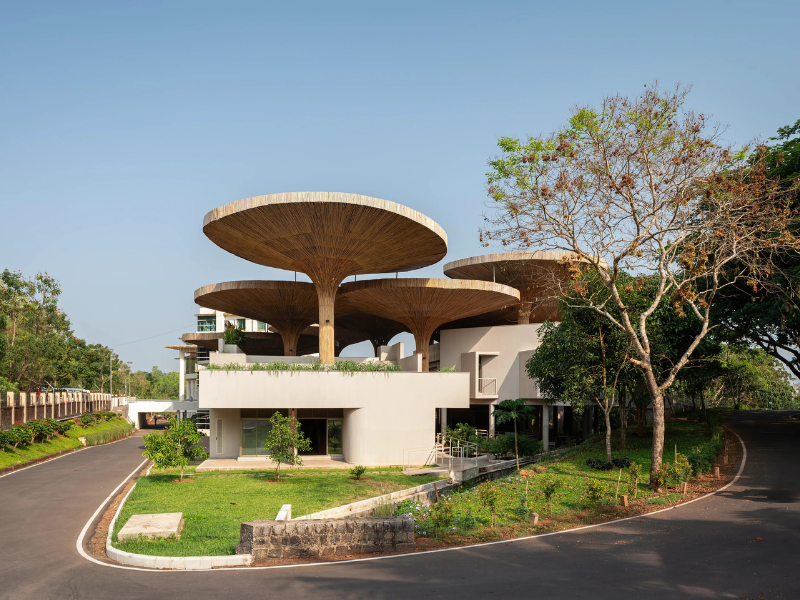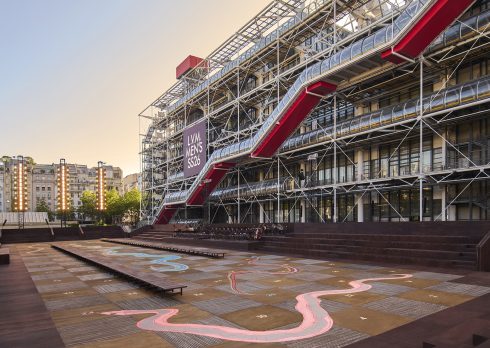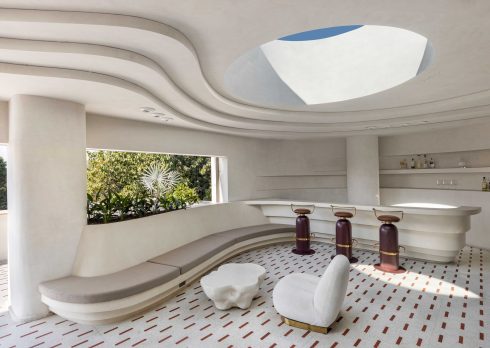How India’s Top Architects Are Shaping Community Spaces
From rain-soaked terraces to sunlit courtyards, DP finds its way into five community centres that celebrate community, craft, and climate through context-responsive and culturally rooted design.
- 12 Aug '25
- 11:54 am by Simran Almeida
In an era when life moved according to the pace of monsoons and migrations, a ‘katta’ (a stone ledge corralling an old tree) stood as the village’s fulcrum. It was beneath the shade where neighbours gathered, elders deliberated, stories evolved, and crucial decisions were taken in shared time. However, as sleepy hamlets gave way to hurried cities, these gathering spots were lost in transition to asphalt and anonymity. Yet, as the pace of modern life grew breathless, a quiet yearning surfaced for spaces that nurtured connection, kinship, and the charm of ancient craft. Today, community centres rise as a new-age sanctum channelling the sacred ritual of gathering at the old ‘kattas,’ while weaving a tapestry of cultural awareness amidst contemporary life. DP finds its way into five community centres designed for the simple, venerated act of gathering, where rituals of craft, conversation, and care quietly awaken a deeper cultural memory.
1. Third Space Cultural And Learning Centre By Studio Saar
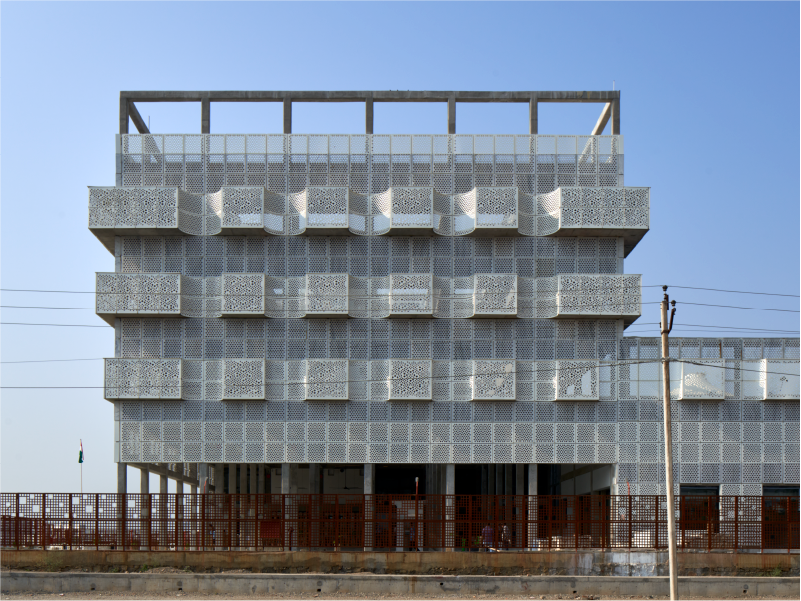
Tucked within the sun-drenched undulations of Udaipur’s arid hills, ‘Third Space: The Haveli of Creativity, Curiosity and Community’ emerges like a cultural pause conceived by the Rajasthan-based architecture practice Studio Saar for Dharohar, a not-for-profit organisation committed to nurturing educational equity. Monikered ‘Third Space,’ it transcends conformist typologies to become a space that “fosters creativity, curiosity, community and physical activity,” remarks Ananya Singhal, Managing Partner of Studio Saar. With a brief to craft a space ‘in between’ and revive the fading sense of community, Dharohar envisioned a gathering space in an ode to India’s ancient step-wells and Europe’s old town squares. The challenge lay in uniting diverse functions into a coherent structure. “To overcome this, we focused on the ‘in between spaces’ such as the entrance, corridors and courtyards, and placed all community activities in the central courtyard, which was designed to serve as a flexible space for performances and community gatherings,” explains Singhal.
Also Read: NoFilter: Merchant Of Images Public Art Project By Aradhana Seth
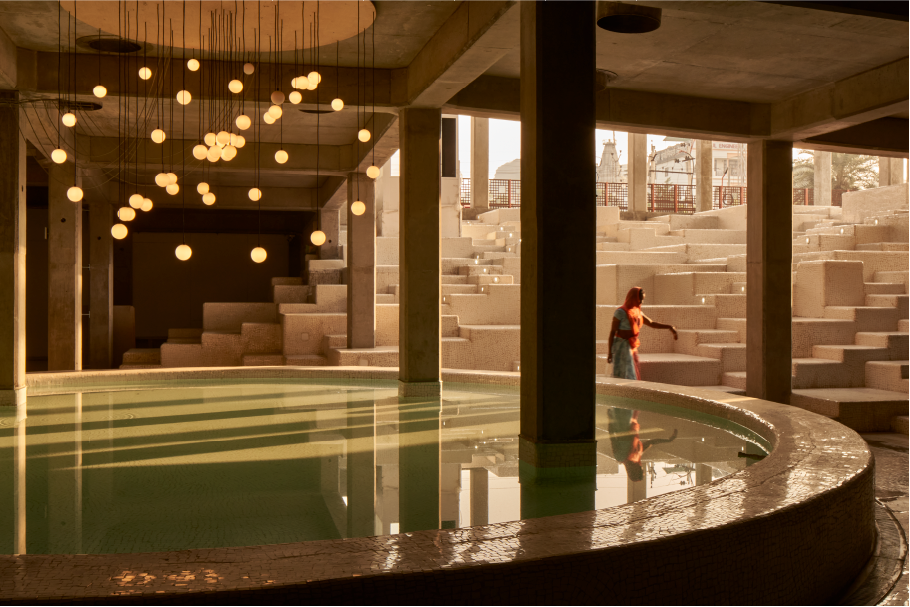
Designed to host up to 2,000 visitors daily, the centre borrows references from Rajasthan’s vernacular roots, its spaces encircling a central courtyard framed by shaded cloisters serve as the space’s vibrant heart. These pinwheels of cloistered wings serve multifarious functions—from cinema space and makerspace to museum, café, and classrooms, all linked together by shaded corridors and punctuated by verdant pockets. The centre features a concrete grid void with a bamboo canopy, which serves as a playscape. “Activities offered in the space include a climbing wall, as well as spaces for parkour and skateboarding on the building’s rooftop,” notes Singhal. These communal spaces are wrapped in jali screens that filter light and maintain privacy, while cantilevered gokhras (oriel windows) catch wind, transforming the façade into a climate-responsive skin parlaying as passive cooling devices. The cinema space, “is designed for use by local dance schools and theatre groups and hosts a programme of Indian classical dance, contemporary dance, children’s theatre and musical performances,” Singhal remarks on the centre’s influence.
2. One Tree Hill Community Hall by Samira Rathod Design Atelier
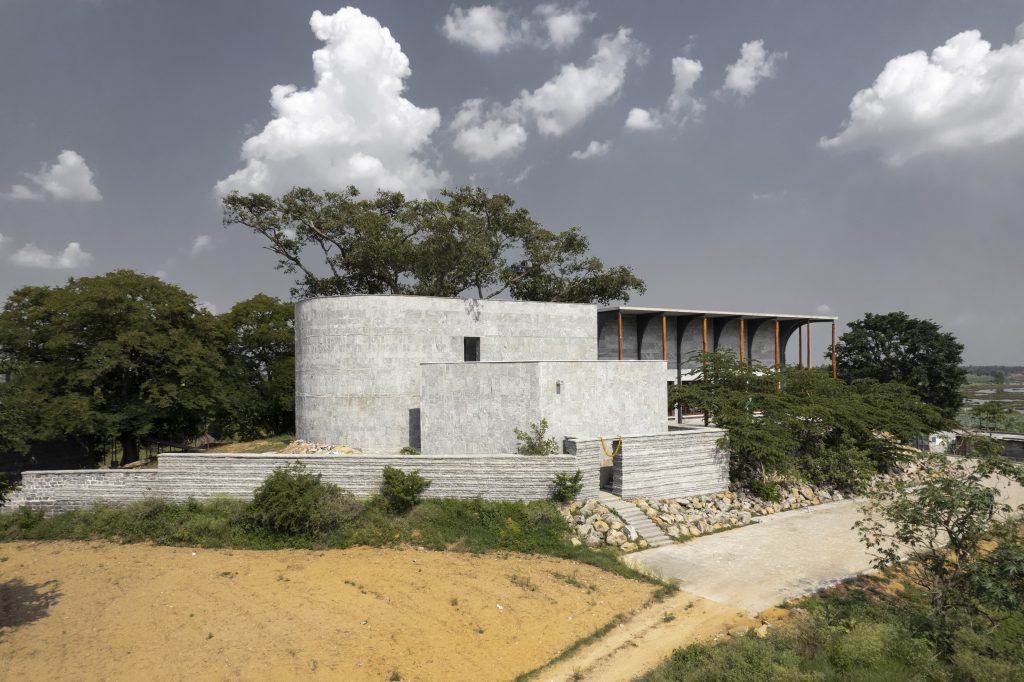
Set against a backdrop of marigold fields, quarry-scarred hills, and adobe homes of Byrasandra, Bengaluru, the One Tree Hill Community Hall transpires as an embodiment of collective memory, identity, and aspiration. Ironically conceived under a Banyan tree, by 88-year-old Harvard alumnus H.R.S. Rao in collaboration with Samira Rathod Design Atelier (SRDA), this hall was initiated serendipitously through a letter and stands as a tribute to the Late. Mr Rao’s ancestors and community. The brief of the project was clear: “He wanted it to be a monument, a powerful symbol for the village, and to have a sense of timelessness,” shares Samira Rathod of Samira Rathod Design Atelier. “Our primary design challenge was translating Mr Rao’s abstract vision of a timeless monument into a functional, yet deeply meaningful, structure,” she adds.
Also Read: DP Curates: 5 Modern Mandir Designs With Unconventional Details
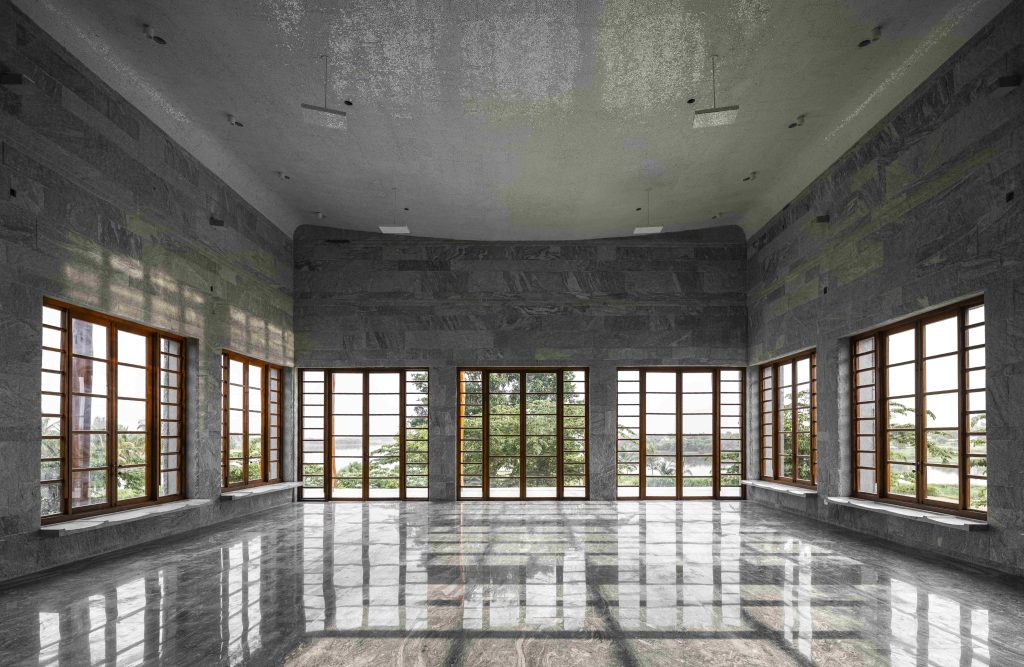
Maintaining a delicate balance between contemporary and vintage charm, Rathod explains, “I aimed to integrate the site’s natural granite and the majestic Banyan tree, not just as context, but as integral architectural elements, influencing material and form.” Subsequently, drawing inspiration from the region’s brutal terrain and temple typologies, the building’s orientation is informed by a sacred shrine and centres around a capacious hall flanked by open-air courts, reminiscent of mandapas. “This is an important shrine for the villagers for prayer and marriages in the community,” shares Rathod. She adds, “The community hall, designed, is now the new space for these community marriages to occur.” Constructed entirely by a group of local Muslim craftsmen, this austere hall is carved in local granite, arranged in interlocking geometries and punctuated by courtyards. Inside, stone slabs soar overhead and are juxtaposed with eucalyptus wood columns, adding a sense of warmth to the space. Metal fins cast shifting shadows that trace the passing day, while textured floors and exposed ceilings echo the quiet labour of reclaimed and reimagined materials.
3. Nokha Village Community Centre by Sanjay Puri Architects
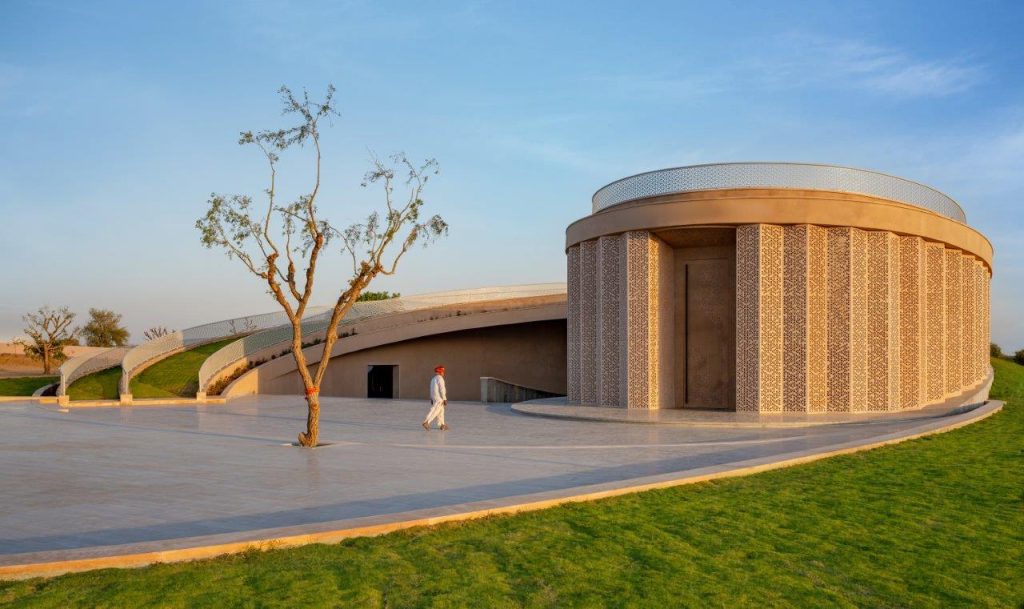
Within the sandy dunes of Nokha, a town nestled in Rajasthan’s Bikaner district, the Nokha Village Community Centre is crafted from the sand of Rajasthan’s desert. Designed by Sanjay Puri Architects, this 9,000 sq. ft. building space of learning, gathering, and exchange for 144 surrounding hamlets. “The project began as a personal commission—a memorial for Padmaramji Kularia, planned by his family at the site where his last rites were performed,” shares Sanjay Puri of Sanjay Puri Architects. Conceived initially as a modest pavilion to house photographs and memorabilia, the idea evolved early on. “During early discussions, we proposed expanding the brief into something more inclusive,” Puri explains. He adds, “The harsh desert climate posed the most significant design challenge.” In response, the studio turned to passive strategies: a north-facing plan, a shaded courtyard, earth berms on three sides, and a rooftop garden for insulation.
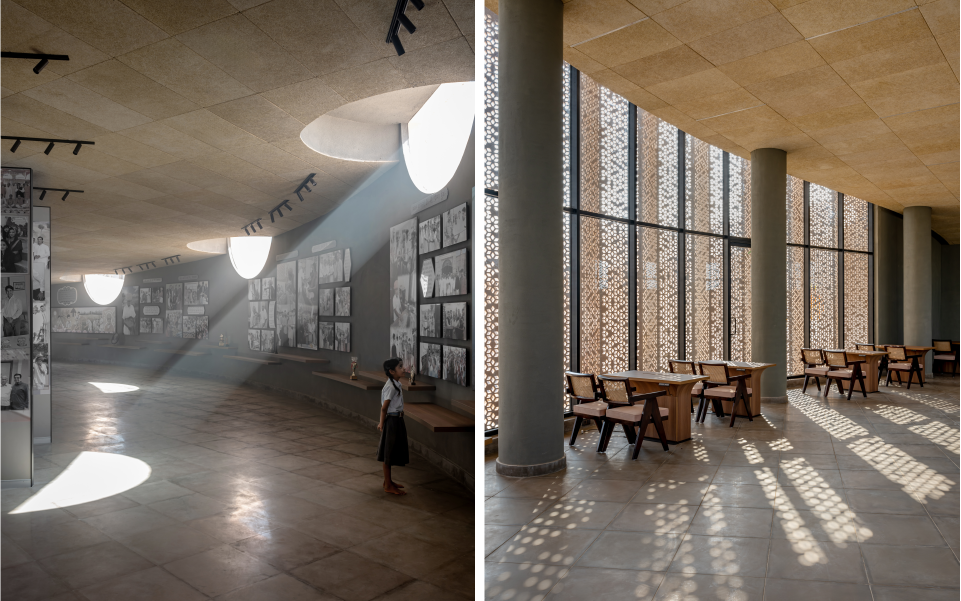
Borrowing from the undulating character of the desert, the design unfurls like a sculpted dune with a sinuous structure emerging from the earth. The façade features jali-inspired sandstone screens and an earth berm, which shields the interiors on the southern side in an ode to vernacular construction techniques and Rajasthan’s intricate craft traditions. Anchored by a north-facing courtyard and echoing Indian chowks and desert contours, this centre houses a shaded amphitheatre and a sloped rooftop garden. “The amphitheatre and courtyard regularly host performances, talks, and cultural gatherings, making the space a platform for local expression,” Puri shares. He adds, “It provides access to the region’s first digital library, a museum space, and a large open-air amphitheatre.” This Community Centre, visited by over 400 villagers each day, incorporates rainwater harvesting, greywater recycling, and passive cooling systems, while the use of local materials and skilled artisans ensures a relationship within the community.
4. Adisaptagram Society Hall By Abin Design Studio
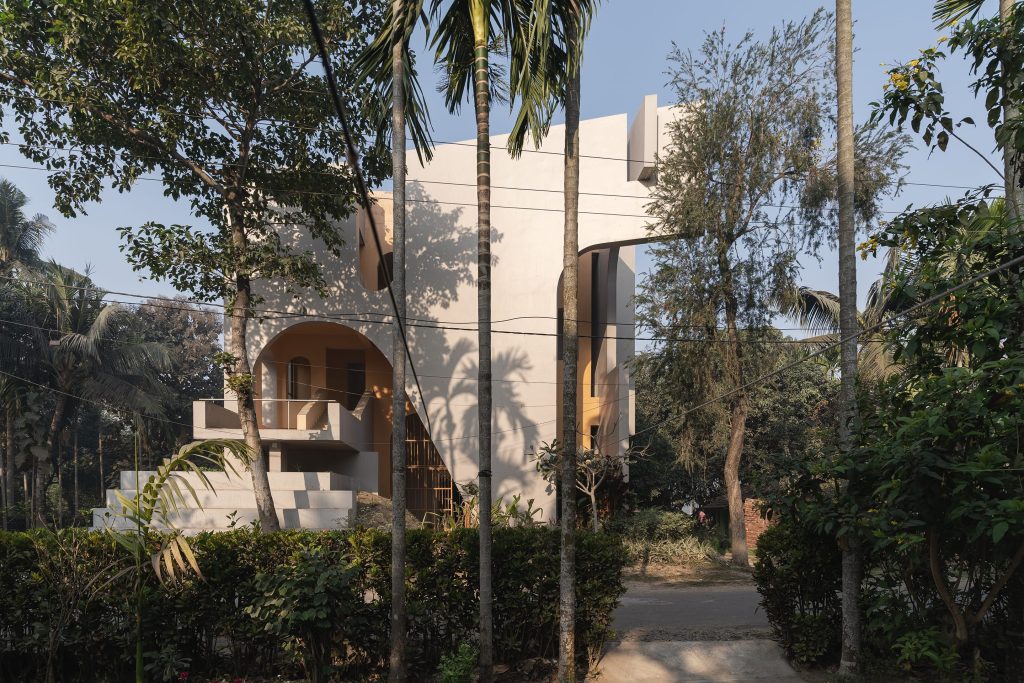
Nestled in the peri-urban fringes of Kolkata’s Hooghly district, the 1,850-square-metre Adisaptagram Society Hall unfolds as a reinterpretation of the conventional government-commissioned auditorium. Spanning 19,913 sq. ft., this centre, envisioned by Abin Design Studio, departs from the expected banality of municipal halls to adapt to the contemporary design ethos while being grounded in the region’s architectural heritage. Backed by a modest budget, the project took shape through a collaboration with the region’s Panchayat and was executed with minimal deviation from the existing footprint, despite numerous constraints. Abin Chaudhuri of Abin Design Studio further elaborates, “It was to be built by a contractor whose primary expertise was in the construction of roadside municipal drains.” Navigating constraints with ingenuity, the studio crafted low-tech architectural solutions rooted in local materials and methods. The design prioritised spatial clarity, passive climate response, and a deep sensitivity to context.
Also Read: A Local Temple In Bansberia, Bengal Gets A New Life By Abin Design Studio

This community centre takes its cues from the surrounding vernacular architecture and the terracotta temple forms native to Bengal. With its sculpted façade cut-outs, massing, and irregular arched openings, the building poses as an opaque monolith with sparse glazing responding to the region’s hot and humid climate. “The interface with the road allows barrier-free access, with a layer of the facade angling outward to create a shaded, yet porous gathering space,” Chaudhuri explains. The design unfurls over three levels and envelops a central foyer accessed through a grand arched gateway leading to a compact auditorium that occupies the ground level, while upper floors house two multifunctional halls and ancillary rooms. “(as) the facility is designed to serve as a peri-urban district community hall,” explains Chaudhuri. The interiors are intentionally restrained, with yellow-toned plaster walls and stone-tiled flooring lending a sun-washed, earthen warmth, while generous openings and patterned perforations invite natural light and ventilation, reinforcing the ethos of passive sustainability. “The use of local materials and methods was proposed that would work within the budget, even if it meant providing their professional services pro bono,” Chaudhuri shares.
5. Centre For Inclusive Growth & Competitiveness For TAMPI By The Purple Ink Studio
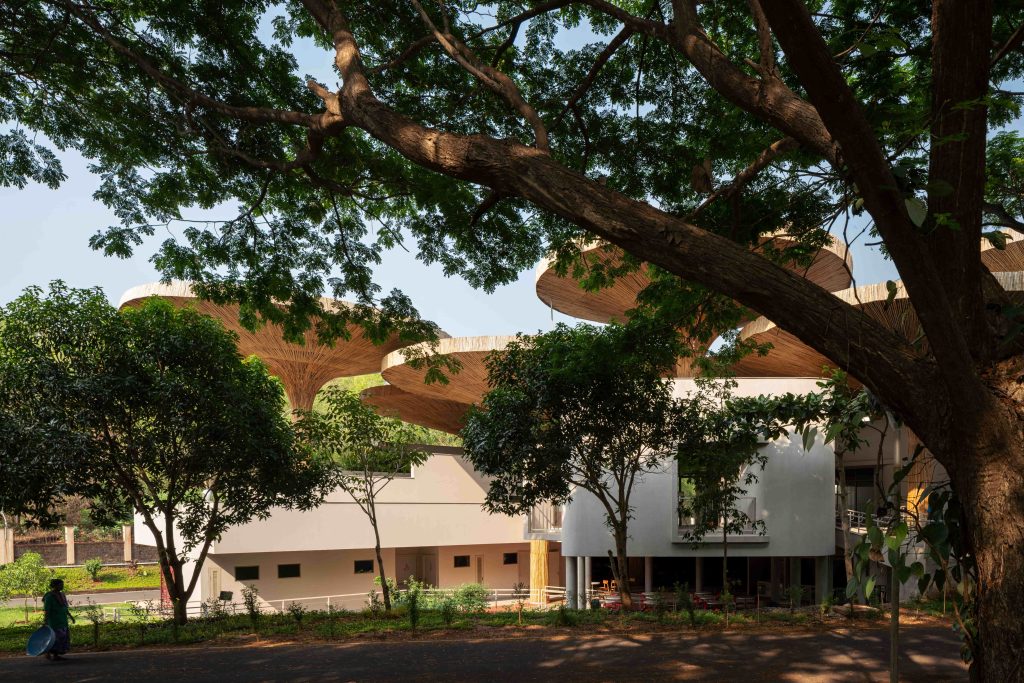
Perched on a hillock in coastal Manipal, the TAPMI Centre for Sustainability emerges within the 40-acre residential campus of the T.A. Pai Management Institute, which nurtures inclusivity, dialogue, and deep-rooted community ties. Conceived by The Purple Ink Studio, occupies a 5,000 sq. ft. parcel that offers sweeping views of the forested valley below. “Planned as an extension to an existing facility, the centre was intended to be a fully functional Innovation and Incubation wing with innovation labs, co-working spaces, demo spaces, tinkering and maker space,” explains Akshay Heranjal of The Purple Ink Studio. Its larger intent was to blur the lines between formal instruction and informal engagement “as the town continues to grow, the centre stands at the vortex of change by not just being a model of change but also empowering the present to be future-ready,” shares Heranjal. With fluid and deeply rooted design, it fosters a spirit of collaboration while responding sensitively to its landscape.
Also Read: Reimagining Women’s College in Surat: A Landmark in Architecture
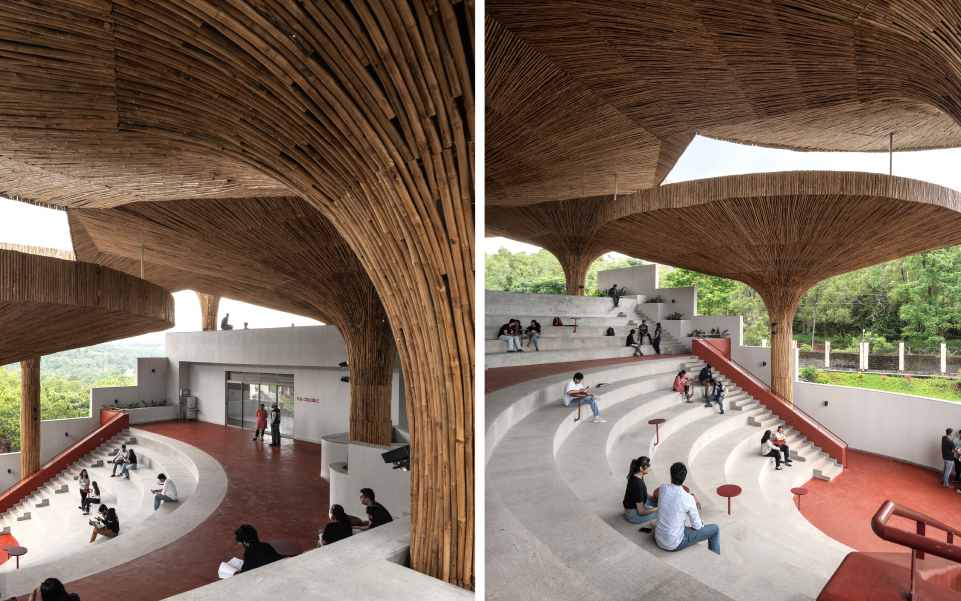
Borrowing from vernacular architecture and urban gathering spaces, the design draws inspiration from Varanasi’s bamboo chhatris, transforming the often-overlooked terrace into a vibrant social hub. A modular canopy of parasol-like structures, crafted with local artisans, offers shelter from monsoons while advocating year-round conversations, workshops, and performances. “The most challenging part of the project for us was the bamboo work, as the parasols took more time to construct than the building itself, where each bamboo piece was meticulously bent on site to follow the parasol profile,” Heranjal shares. Anchoring the building is ‘Angala,’ a sunken amphitheatre that merges with the site’s contours, dissolving boundaries between built and unbuilt. With multi-axial access, ramps, and land bridges, the design embraces the slope, with a deliberately doorless approach. “The building becomes a symbol of inclusivity, encouraging collaboration between the academic community and the city’s residents, fostering creativity, dialogue, and shared experiences,” explains Heranjal. He adds, “The design ideology of the centre is deeply rooted in a transformative model—one that can evolve to meet the demands of modern learning while embracing cultural roots.


